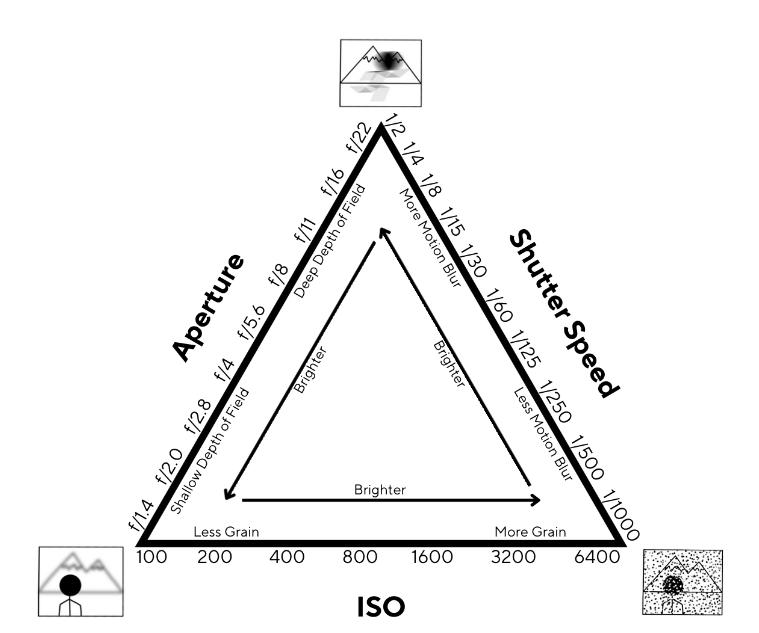By Dan Molenhouse, Solutions Engineer
Overview
In photography and videography, exposure is the amount of light that reaches the film or digital sensor. The process of creating an image must be precisely controlled to allow the correct amount of light to reach the imaging sensor. Three critical elements control the exposure of an image: ISO, Shutter Speed, and Aperture.
ISO is a standard for measuring sensitivity to light and dictates how much light the sensor needs to get a correctly exposed image.
Shutter speed is the how long the camera shutter is open, and dictates the amount of time that light is allowed to pass through the lens.
Aperture is the opening in the camera lens, similar to the iris of a human eye, and dictates the amount of light that will be able to pass through the lens and reach the image sensor.
These three elements of exposure combine to form the exposure triangle, and balancing the three properly will result in an image being correctly exposed.
When an image is properly exposed, both the bright and dark areas of the image will be clear and visible:
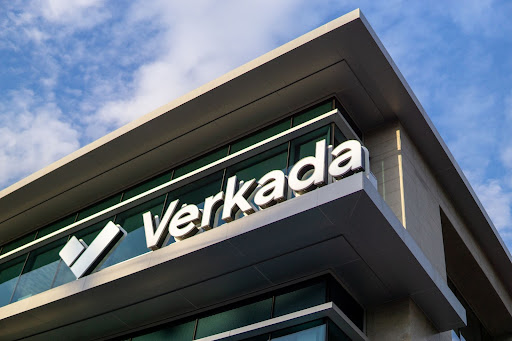
If an image is underexposed, it will appear dark, and information in the shadows will be lost:
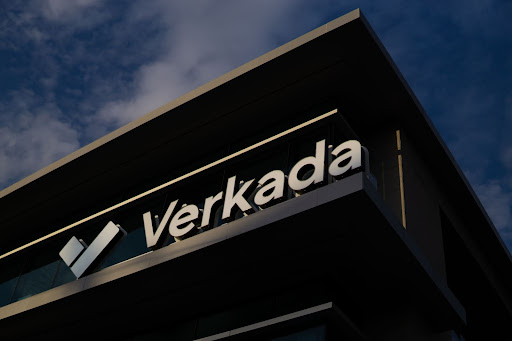
If an image is overexposed, the opposite occurs and it will appear bright, and information in the highlights will be lost:
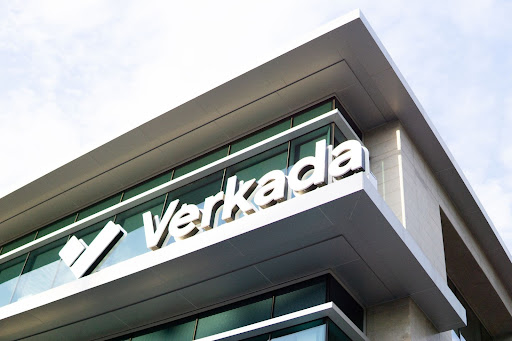
ISO
ISO measures the film or digital sensor’s general sensitivity to light. Modern digital sensors can alter their ISO to fit a broad range of lighting conditions. A low ISO number like 100 indicates less light sensitivity and is ideal for bright conditions where there is a lot of available light.
A high ISO like 1600 indicates a higher sensitivity to light, thus requiring less overall light for proper exposure. High ISO is ideal for low-light conditions but comes with one drawback. Higher ISO introduces more artificial noise in the final image and can detract from the overall image quality.

Shutter Speed
Shutter speed is the duration of time in seconds that the camera’s shutter remains open to allow light to enter and expose the sensor. A slow shutter speed increases the amount of time the sensor is exposed to the scene and allows more light to enter the camera. This is ideal for dark, low-light scenes, but will introduce motion blur in any objects that were moving during the exposure. A fast shutter speed minimizes the amount of time the sensor is exposed to the scene, and is therefore ideal for bright, well-lit scenes. Fast shutter speed is also critical for minimizing any motion blur in the image, and freezes fast-moving objects in the final image.

Aperture
The aperture is the size of the opening in the camera’s lens and determines how much light will enter the camera. Aperture is denoted in the common industry term “f-stop” (or f-numbers) like f/2.8 or f/16. It is critical to note that the f-stop scale is inversely related to the aperture size. This means the Lower f-numbers (f/1.8) indicate that the aperture is wider or further open, and will allow more light into the camera.
A wider aperture is ideal for low-light situations because it allows as much light to enter the camera as possible. Higher f-numbers (f/16) indicate that the aperture is further closed or narrower, and will allow less light to enter the camera. Narrow apertures are ideal for bright, sunny conditions where there is ample light.
Beyond just controlling the amount of light, aperture is one of the major factors affecting depth of field. Depth of field is the range within the scene that appears sharp and in focus. A wide aperture creates a shallow depth of field that will result in the subject of the photo being sharp, but the rest of the image being blurred. This is a preferred effect in professional portrait photography because it isolates the subject.
A narrow aperture will create a deep depth of field in which most of the frame will be in focus. This is preferred in landscape photography and security surveillance systems where everything in the photo needs to be in focus.
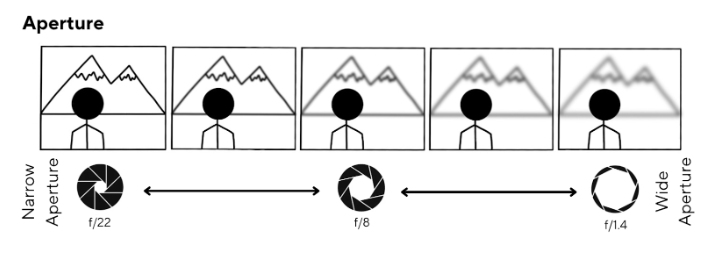
The Exposure Triangle
The exposure triangle combines all three elements of exposure and shows the relationship between ISO, shutter speed, and aperture. Altering one of the elements will cause the other two to also shift to ensure the image remains properly exposed. For example, a fast shutter speed may be chosen to reduce motion blur. This choice limits the amount of light entering the camera, so either ISO must increase, or aperture must widen. If neither of these occur, the image could be underexposed.
